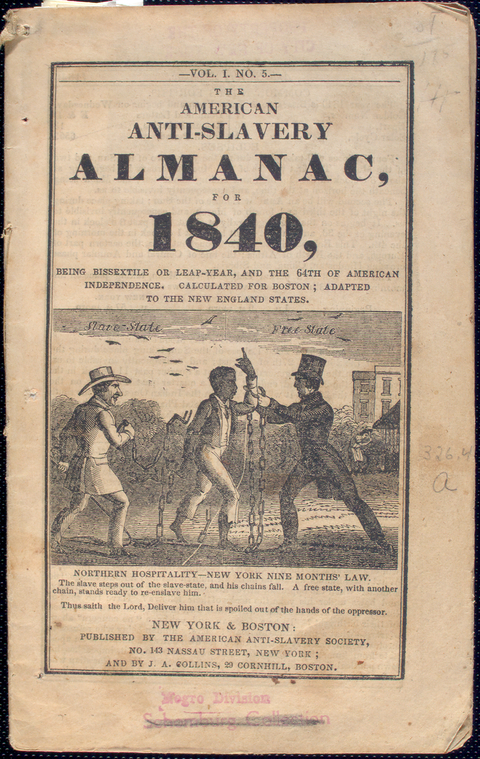
The anti-slavery almanac were illustrations, advertisements and anti-slavery literature that were widely publicized that were intended to spread knowledge about slavery, discrimination against people of color and why America should abolish slavery. During this time- period, 70 abolitionists agents crafted a nation-wide anti-slavery movement 68 out of the 70 agents “were virtually all ministers: established pastors, young pastors, or pastors in training”. [i]Their main goal as a movement was to hopefully convince both white southerners and northerners of slavery’s inhumanity. They used the principles of religion as a way to persuade individuals about slavery and the wrongdoing. The different abolishment agents would also have speakers and send out anti-slavery Alamac to different communities as another way to convince people. The movement saw a huge success and “By 1820, organized opposition to slavery had spread to the frontier states of Ohio, Kentucky, and Tennessee. In the South, 1827 marks the height of the organized antislavery movement”. [ii]
The title of the historical source that I chose is called the “American Anti-Slavery Almanac for 1840” published by Webster and Southard. The illustration took place in Boston during the 1840s during the anti-slavery movement as it represents an anti-slavery almanac which helps raise awareness of slavery in the nineteenth century. In the Image, you can see an African American chained up by two white males who are both wearing hats. The left male in all white represents the slave states (southern) and the right male in all black represents a free state (northern). On the bottom of the image there is a caption that states “The slave steps out of the slave state, and his chains fall. A free state, with another chain, stands ready to re-enslave him”. The slave is giving the middle finger to the male that represents the free state as he is getting chained back up.
The picture is very hard to interpret as you see a slave getting chained up by a free state. A free state is considered to be a state where slavery is either prohibited or being phased out. Through the use of imagery, the artist shows the opposite of what people think when it comes to the northern states. Even though the northern states were known as free states, slavery still existed. The illustration gives a better understanding on what actually happened during this time period. When people think of the northern states, they automatically assume that they were considered the good guys. Even though slaves in the north learned specialized skills such as blacksmith, stone carvers, and silversmiths, they still were the legal property of another person, treated unfairly because of the color of their skin and were not compensated by their work.
[i] Matsui, John. Slavery & Abolition, September 2013. https://eds.p.ebscohost.com/eds/pdfviewer/pdfviewer?vid=16&sid=eb3c8025-a7bc-45a9-8603-022c6f45707e%40redis.
[ii] King, Marissa D., and Heather A. Haveman. “Antislavery in America: The Press, the Pulpit, and the Rise of Antislavery Societies.” Administrative Science Quarterly 53, no. 3 (September 2008): 492–528. doi:10.2189/asqu.53.3.492.
